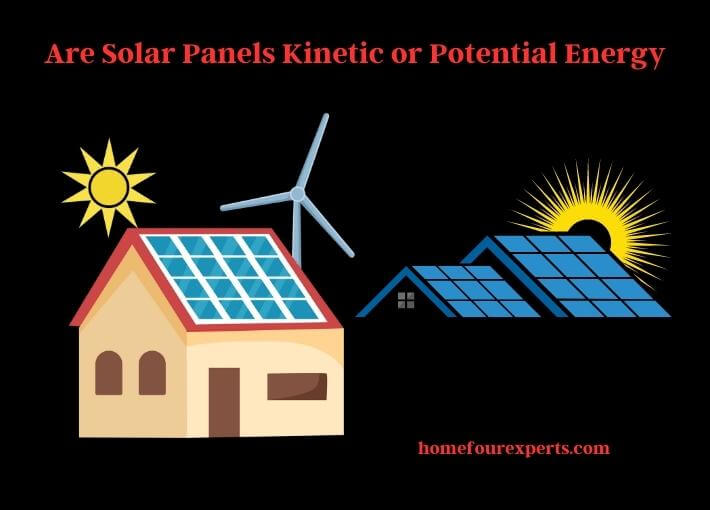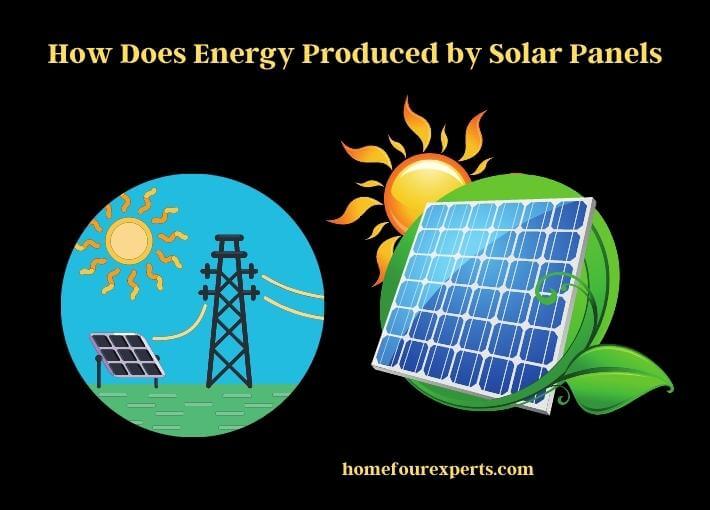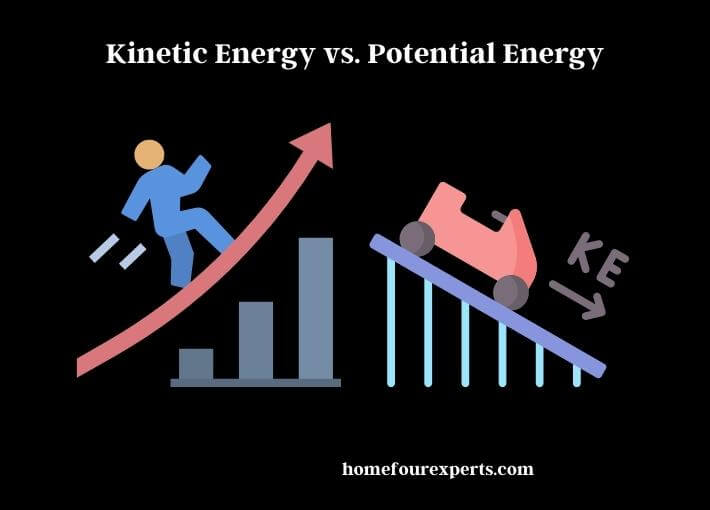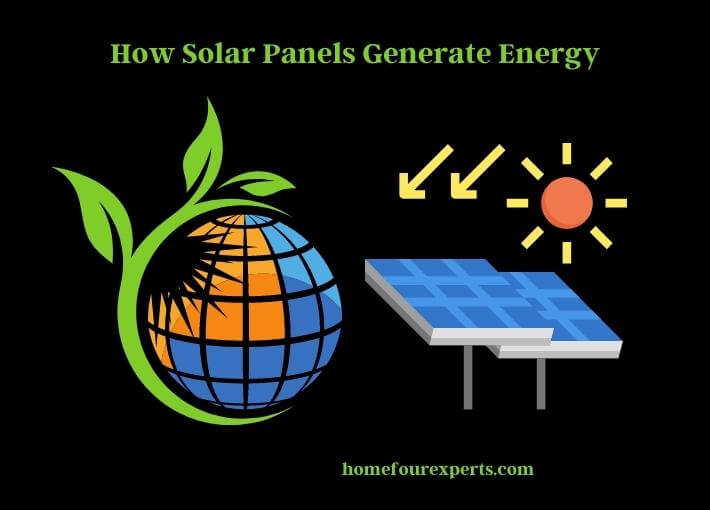As the world continues to search for alternative sources of energy, solar power has emerged as a promising option. Solar panels, which convert sunlight into electricity, have become increasingly popular in recent years. There is some confusion around whether solar panels are a form of kinetic or potential energy.

The Basics of Solar Panels
Solar panels are devices that convert sunlight into electrical energy. They are made up of solar cells, which are typically made of silicon or other semiconducting materials. When sunlight hits a solar cell, it causes electrons in the cell to become excited and move, generating an electrical charge.
Solar panels are designed to capture as much sunlight as possible. They are usually made up of multiple solar cells that are connected together in series and mounted onto a frame. The frame is usually placed on a rooftop or other sunny location, such as a field or parking lot.
The electrical energy generated by a solar panel is direct current (DC), which is not compatible with most household appliances and electrical grids. To make it usable, it must be converted into alternating current (AC) using an inverter. The AC electricity can then be used to power appliances, lighting, and other electrical devices.
One of the advantages of solar panels is that they are a renewable and sustainable source of energy. Unlike fossil fuels, which are finite resources that will eventually run out, the sun will continue to shine for billions of years. Solar power does not produce greenhouse gas emissions or other pollutants, making it a clean and environmentally friendly source of energy. You have to know that solar-powered motion security light is obviously the best option for decorating and lighting up your home around nicely.
Solar panels also have some disadvantages. They can be expensive to install and require adequate sunlight to operate efficiently. The production of solar panels themselves can have environmental impacts, such as the use of toxic chemicals and the production of waste.
How Does Energy Produced by Solar Panels?
As mentioned earlier, solar panels convert sunlight into electrical energy. This process begins when photons from the sun strike the surface of the solar cells in the panel. These photons knock electrons in the cells loose, creating an electrical charge.
The cells in the solar panel are arranged in a series and connected by wires. As the electrons move through the cells and the wires, they generate direct current (DC) electricity. This electricity is then fed to an inverter, which converts it into alternating current (AC) electricity.

AC electricity can be used to power appliances, lighting, and other electrical devices in a home or business. Any excess electricity produced by the solar panels can be stored in batteries for use at a later time, such as during the night when there is no sunlight available. Alternatively, excess electricity can be sent back to the grid for use by other customers, a process known as net metering.
The amount of electricity produced by a solar panel depends on several factors, including the size and efficiency of the panel, the angle and orientation of the panel, and the amount of sunlight available. In general, a larger and more efficient panel that is positioned to capture the maximum amount of sunlight will produce more electricity.
Kinetic Energy vs. Potential Energy
Sure, there’s a table comparing kinetic energy and potential energy in the context of solar panels:

| Kinetic Energy | Potential Energy |
| Movement energy | Stored energy |
| Results from motion | Results from position or configuration |
| Examples: wind, moving water, moving objects | Examples: gravity, chemical bonds, compressed springs |
| Not directly applicable to solar panels | Applicable to solar panels through the photovoltaic effect |
| This does not apply to the energy produced by solar panels | The energy produced by solar panels is a form of potential energy |
Kinetic energy is energy that results from motion, while potential energy is energy that is stored in position or configuration. While kinetic energy is not directly applicable to solar panels, potential energy is relevant through the photovoltaic effect that converts sunlight into electrical energy. The energy produced by solar panels is a form of potential energy, as it is stored in the electrical charge generated by the solar cells.
How do Solar Panels Generate Energy?
Solar panels generate energy through a process called the photovoltaic effect. This process involves the conversion of sunlight into electrical energy.
Solar panels are made up of multiple photovoltaic (PV) cells, which are small devices that convert sunlight into electricity. These cells are made of semiconducting materials such as silicon, which absorb photons from sunlight and release electrons.
When sunlight hits a solar panel, the photons from the sun excite the electrons in the PV cells, causing them to become energized and move around. The PV cells are arranged in a circuit, and the movement of these energized electrons creates a flow of electric current in the circuit.

This electric current is direct current (DC) electricity, which is then sent to an inverter. The inverter converts the DC electricity into alternating current (AC) electricity, which can be used to power homes and businesses.
The amount of electricity produced by a solar panel depends on several factors, including the size and efficiency of the panel, the angle and orientation of the panel, and the amount of sunlight available. In general, a larger and more efficient panel that is positioned to capture the maximum amount of sunlight will produce more electricity.
Can Solar Panels Produce Both Kinetic and Potential Energy Simultaneously?
While solar panels offer many advantages over traditional fossil fuel-based energy sources, there are some potential disadvantages to consider as well. Here are a few:
- Cost: The initial cost of installing solar panels can be high, especially for larger systems. While the long-term savings from reduced energy bills can offset this cost, it can still be a significant investment.
- Weather-dependent: Solar panels rely on sunlight to generate electricity, so they may not produce as much energy on cloudy or rainy days. This can make them less reliable as a sole source of energy, although battery storage can help mitigate this issue.
- Space requirements: Solar panels require a certain amount of space to be installed, and the amount of space needed can depend on the size of the system. For some homeowners or businesses with limited space, this may make it difficult to install a large enough system to meet their energy needs.
- Environmental concerns: While solar panels themselves are environmentally friendly, the manufacturing process can have some negative environmental impacts. The disposal of old or damaged panels can also be an issue.
- Energy storage: While solar panels can generate electricity during the day, they do not generate electricity at night. Without energy storage solutions such as batteries, solar panel systems may not be able to provide a constant source of energy.
Final Words
Solar panels are a valuable and important source of renewable energy that offer a number of benefits over traditional fossil fuel-based energy sources. By harnessing the power of the sun, solar panels provide a clean and sustainable source of electricity that can help reduce greenhouse gas emissions and combat climate change.
While the initial costs of installing solar panels can be high, the long-term benefits in terms of energy savings and reduced reliance on nonrenewable resources make them a smart investment for both homes and businesses. Advances in technology and decreasing costs are making solar power increasingly accessible and affordable.
As we continue to face the urgent challenge of addressing climate change and reducing our carbon footprint, solar panels offer a promising solution for a more sustainable and environmentally-friendly future. With ongoing innovation and investment in renewable energy sources, solar power has the potential to play a major role in shaping the energy landscape of tomorrow.
FAQs
Do Solar Panels Produce Kinetic Energy When They Move to Track the Sun?
Solar panels themselves do not produce kinetic energy when they move to track the sun. While some solar panel systems use tracking mechanisms to follow the sun’s movement throughout the day, the energy generated by the solar panels themselves is still considered potential energy.
The movement of the tracking mechanism is powered by motors, which convert electrical energy from the solar panels into mechanical energy to move the panels. This mechanical energy is also a form of potential energy, as it is stored in the system and can be converted back into electrical energy when needed.
How Does the Efficiency of a Solar Panel Affect the Energy It Produces?
The efficiency of a solar panel directly affects the amount of energy it can produce. More efficient solar panels can generate more electricity from the same amount of sunlight than less efficient panels.
Solar panel efficiency is measured by the percentage of sunlight that is converted into usable electricity. For example, a solar panel with an efficiency rating of 20% can convert 20% of the sunlight it receives into usable electricity, while a panel with an efficiency rating of 15% would convert only 15% of the sunlight into electricity.
Higher-efficiency solar panels can be especially beneficial for installations with limited space or for areas with lower levels of sunlight. They can also lead to cost savings over the long term by producing more energy per panel and reducing the number of panels needed to meet energy demands.
It’s important to note that the efficiency of a solar panel can be affected by a number of factors, such as temperature and shading. Higher-efficiency panels may come with a higher price tag, so it’s important to consider the balance between efficiency and cost when selecting a solar panel system.
Which Type of Energy Storage is Better for Solar Panels?
There are several types of energy storage systems that can be used in conjunction with solar panels, including batteries, pumped hydro storage, and thermal energy storage. Each type of storage has its own advantages and disadvantages, so the best option will depend on a variety of factors, including the specific application and available resources.
Batteries are a popular option for solar energy storage because they can be easily scaled to meet different energy demands and are relatively compact. Lithium-ion batteries, in particular, have become more affordable and efficient in recent years, making them a popular choice for residential and commercial solar installations.
Pumped hydro storage involves using excess energy generated by solar panels to pump water from a lower reservoir to a higher one. When energy is needed, the water can be released back down through a turbine, generating electricity. This method is often used in large-scale solar installations, but it requires access to suitable topography and a significant amount of water.
Thermal energy storage systems use excess solar energy to heat or cool a material, such as water or molten salt. This stored energy can then be used to generate electricity or provide heating and cooling as needed. Thermal storage can be particularly useful in applications that require a steady supply of energy over an extended period of time.
The best energy storage option for solar panels will depend on the specific needs and resources of the installation. It’s important to consider factors such as cost, scalability, and efficiency when selecting an energy storage system.
About This Writer

Hi, I am responsible for the 'Homeowners Power Solutions' category. My name is Liam Jaxon and a licensed technician with 7 years of experience in vehicle batteries, electrical gadgets, and home appliances. My working experience in different residential & light commercial electrical sectors and the automobile industry helped to acquire vast knowledge in this industry.